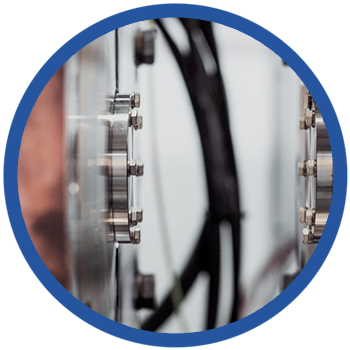Safety is an important topic when it comes to the manufacturing industry. Keeping employees safe and the workplace as free of injury and illness as possible is what each employer strives for. When you think of workplace safety you probably think of procedures and rules—a list of do’s and don’ts. Automation probably doesn’t come to mind right away; however, it can be used to ease safety concerns.

Automation can be a great way to reduce the risk of employee injury at the operational level.
This is done by removing the employee from a potentially dangerous situation and having an automated machine or process perform the hazardous tasks instead. By taking employees out of certain situations and using automation instead, employers can eliminate a lot of risk for immediate physical injuries like broken bones, sprains, cuts, or burns. Automation can also lower the risk of injuries caused by repetitive motions or ergonomic issues. These types of injuries are typically caused by overexertion, repetitive motions, and lifting heavy items. Some tasks that require exposure to hazardous chemicals or vapors can really benefit the use of automation. If employees are exposed to this type of environment long-term there is the potential for them to develop an illness. Removing employees from potentially dangerous situations benefits both the employer and the employee.
It benefits the employer
It benefits the employer by reducing the number of work related accidents, amount of time off the job, and worker’s compensation claims. The less employees injured on the job means less money spent on worker’s compensation. Also, when employees are sick or injured there tends to be a loss in productivity because of their absence. Using automated systems eliminates the risk for a loss in productivity caused by illness or injury. By taking employees out of physically challenging or hazardous positions and using automation instead, the employer can focus on developing those employees’ talents. Because the manual repetitive labor taken care of, employers can put manpower toward creative jobs that require imagination, or more logical jobs that require precise decision-making skills and thought.
It benefits the employee
Automation benefits the employee by reducing their risk for injury or long-term illness. But it also provides much more than that. When employees are positioned in safer areas and are given more engaging jobs they feel that the company they work for truly cares about their well-being—they feel valued and engaged. Employees who are engaged and have high well-being are 27% more likely to report “excellent” performance in their own job at work. (Gallup) This means that valued and healthy employees want to perform well in their job.
Whether your company is struggling to stay relatively injury-free or is simply looking to keep employees out of harm’s way, automation can help.
Let’s Get Connected
